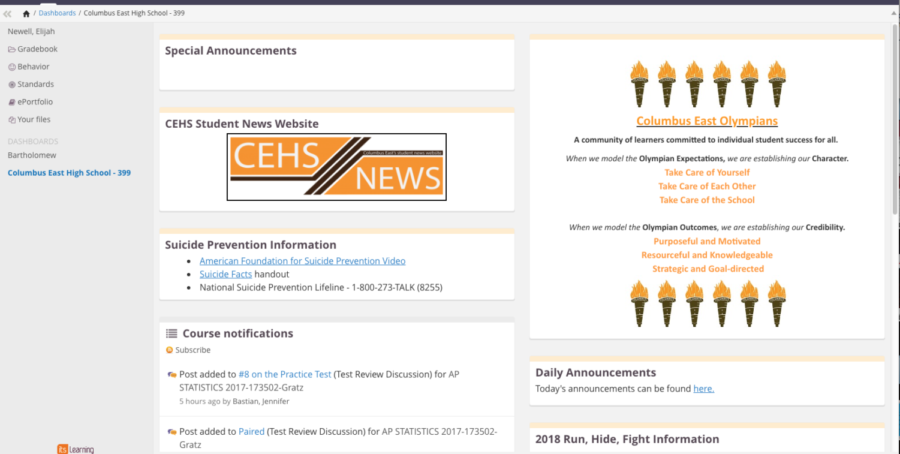Effectiveness of E-Learning
April 9, 2018
Last week, East students took a lesson in responsibility and time management when BCSC called for three consecutive e-learning days. Due to many flooded roadways, instead of going to school, students were required to log on to the educational platform “ItsLearning” and complete activities for each class they missed.
Some students found having school off for three days was like a second spring break and enjoyed the freedom the e-learning days granted as senior Ellie Simpson did.
“I liked that I could get my work done on my own time instead of sitting classes and listening to lectures,” Simpson said.
Others voiced displeasure for the e-learning days because they found themselves trapped in a digital world full of assignments like junior Kassidy Humes.
“E-learning days give students more busy work than anything. I’m doing more work than I do in a normal school day,” Humes said.
With the heavy workload being a major drawback, issues arose when students did not have textbooks to complete assignments and when school laptops had difficulty connecting with the school server.
Also, a major problem that some elementary and middle schoolers faced was they did not have their school internet device. The BCSC website says under the e-learning days tab that, “make sure that you plan ahead so that you have a device at home,” but it is almost impossible to predict when e-learning days will occur.
Due to these problems, teachers were instructed to have assignments due this Wednesday. Although this was a needed buffer, it gave students an incentive to not complete their work during the e-learning day.
In general, the e-learning days were a productive alternative to the school day. The student body received the days with mixed emotions but what matters is how students chose to work on the e-learning days.








Dustin Rodgers • Apr 9, 2018 at 1:24 pm
I liked this story although I didn’t like doing the work. When is that Ethan Glaid, the editor-and-chief kid gonna post another story.